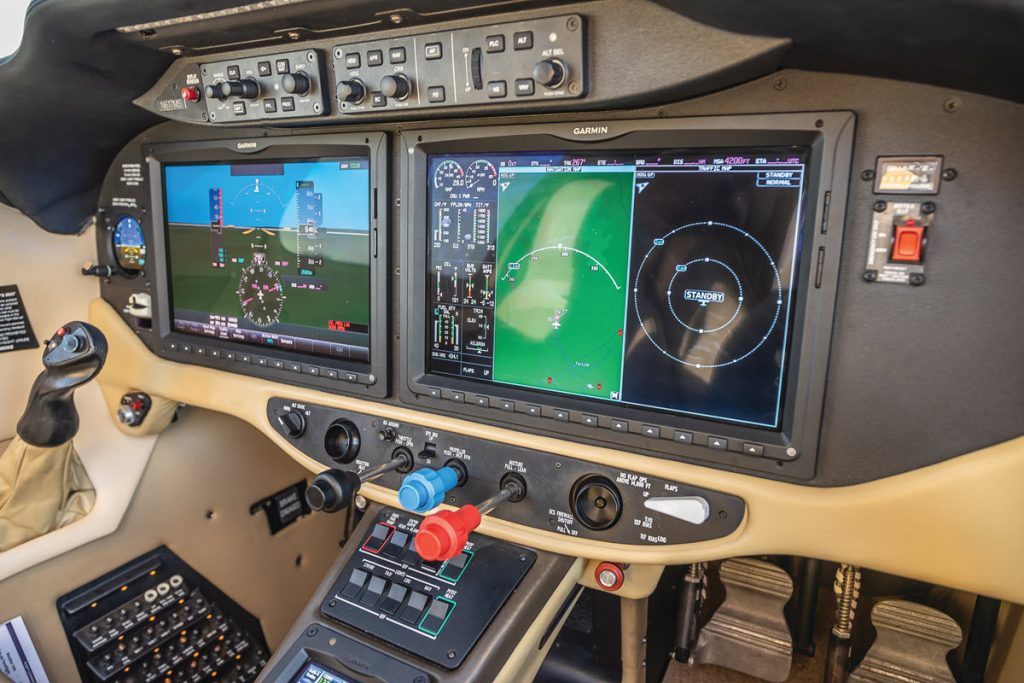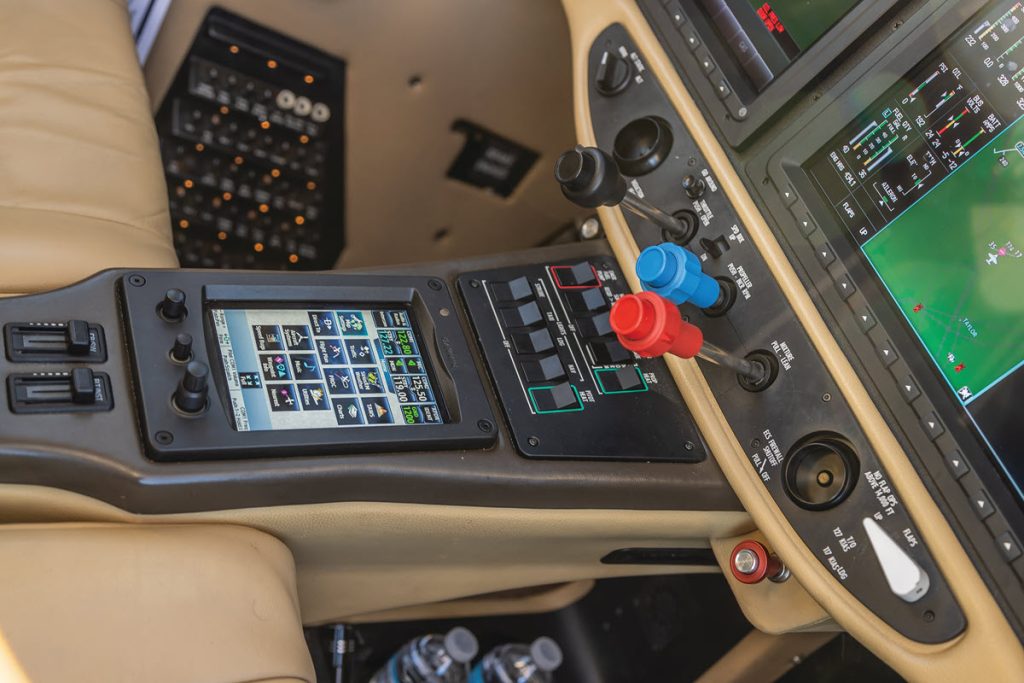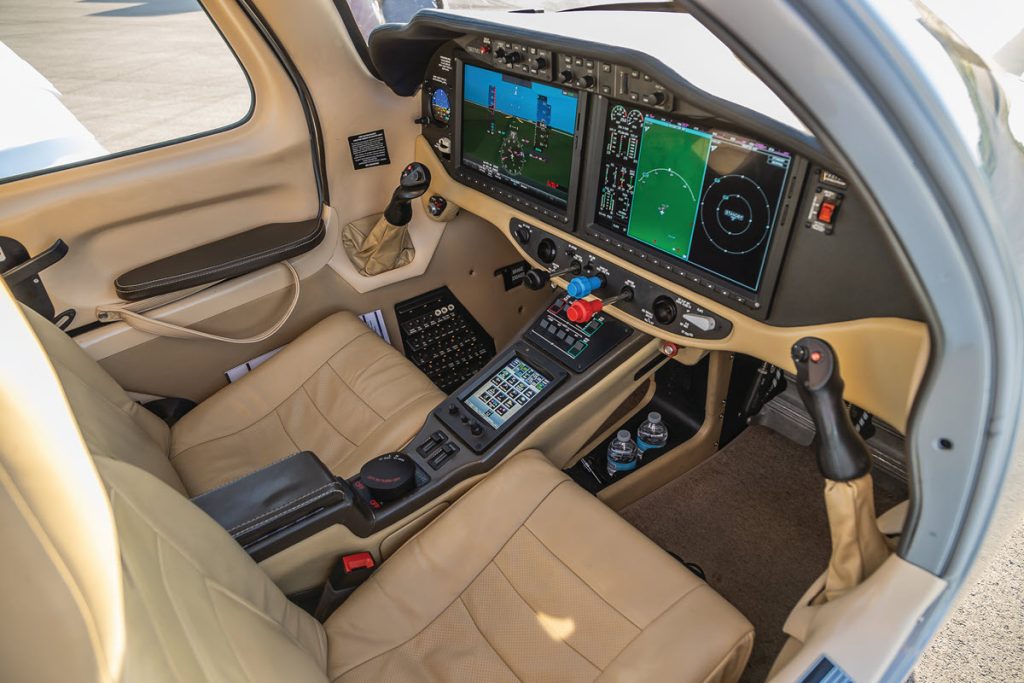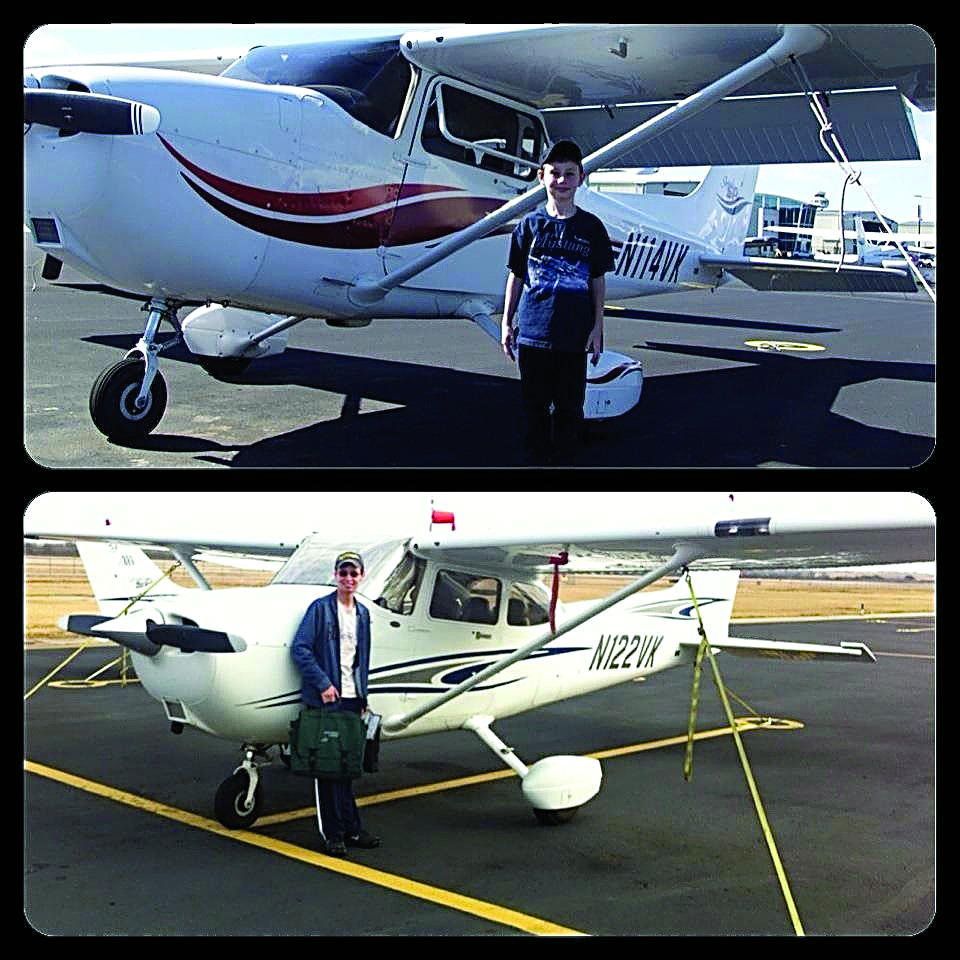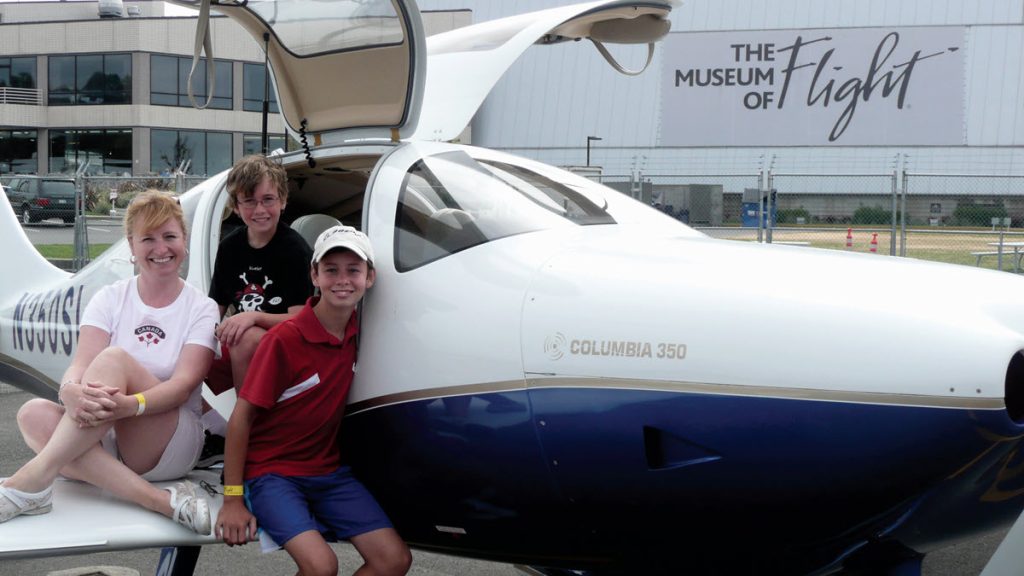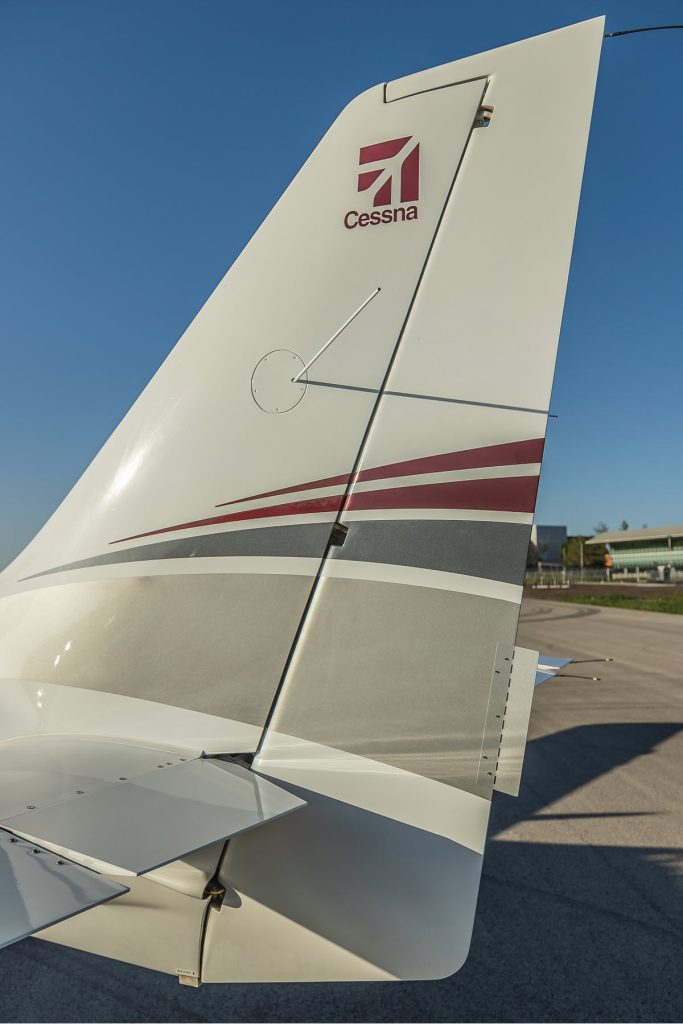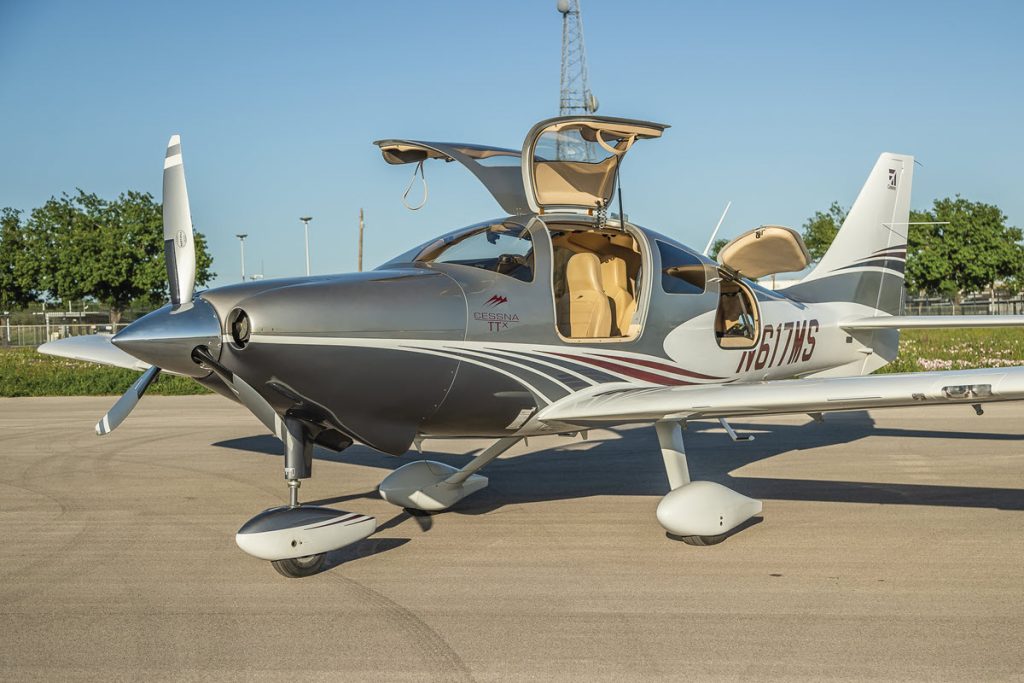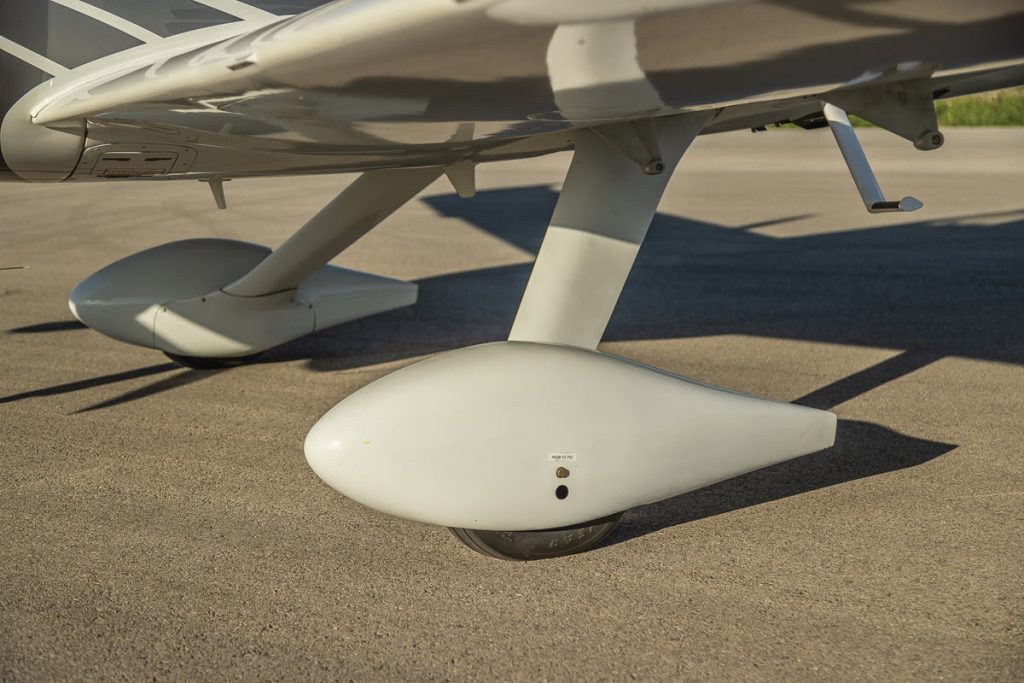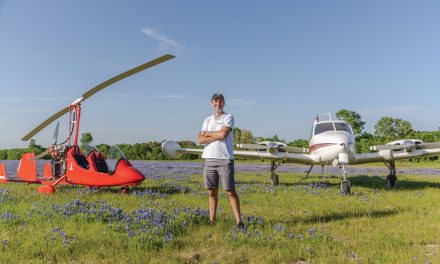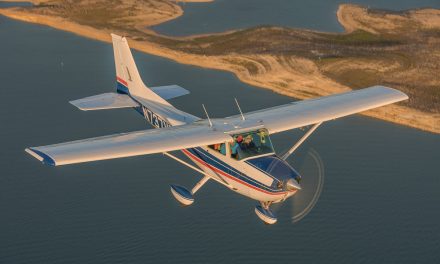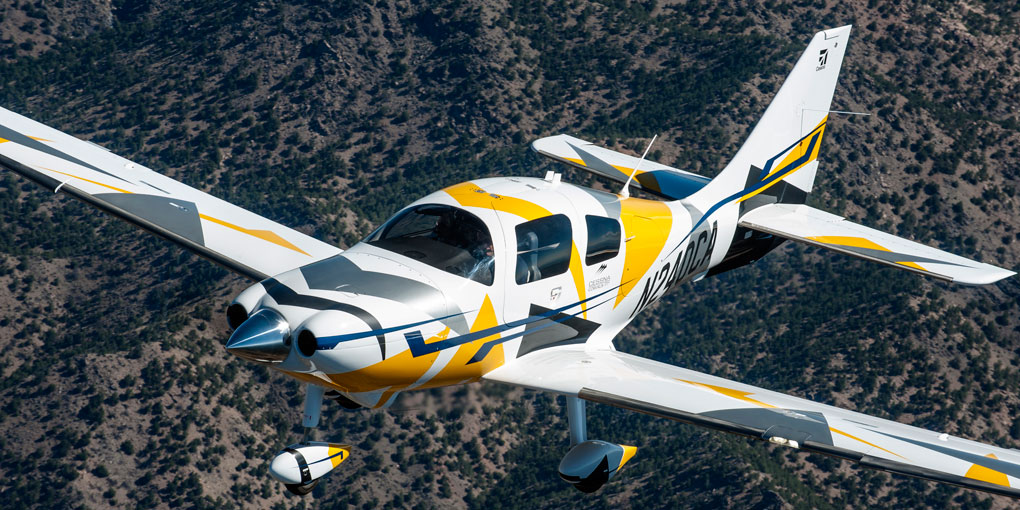
Mark Whaling credits his oldest son for prompting him to get his pilot’s certificate. When he was just five years old, Tim requested a discovery flight as his birthday present. Perched on two booster seats, the youngster sat in the left seat of the 172 flight trainer, barely able to see over the cockpit’s dashboard. Virgil Kennedy, the flight school owner and former Air Force KC-135 pilot, sat in the right seat giving Tim his first hour of dual instruction. Mark and his wife sat in the back.
Mark’s father was an A&P mechanic in the Royal Canadian Air Force, so flying was an integral part of his childhood. At the end of the flight, Rosemary said, “You’ve always wanted to learn how to fly. You should do it. The time is right.” Mark warned his wife that her encouragement would ultimately lead to owning an airplane, a fairly big obligation to take on. Her commitment was unwavering.
Mark began his flight training at the Austin Academy of Aviation, at Austin Bergstrom, shortly after Tim’s 2004 discovery flight. Looking back, he can see the advantages of learning to operate in Class C airspace. In 2005, Mark received his private rating and he completed his instrument rating in 2006. The following year, true to what he’d told his wife a few short years earlier, he bought his first airplane; a 2007 Columbia 350SL.
Making the Transition
Mark and Rosemary both grew up in Canada and still have many family members there. They also have a summer cottage in Ontario, a 1300 nautical mile trip from their home. Because they make the trip several times a year, the 2013 Cessna TTx T240 proved an excellent choice for their needs.
“The TTx was a natural transition from the Columbia/Cessna 350.” The two planes are very similar, so Mark found the upgrade “simple and straightforward.” Mark observed that both airplanes have beautiful, clean designs and comfortable interiors ideal for cross-country travel. But the additional airspeed and onboard oxygen the Cessna TTx offers is a plus for their fairly frequent family trips.
Mark was already familiar with the airplane and its owner before he purchased it. It was a single-owner airplane that resided just two T-hangars from his Cessna 350. Knowing the care the owner had given his TTx made the decision to purchase this aircraft a natural one. “The plane is in excellent condition, I would say almost ‘as new condition.’”
Mark hasn’t had any major work done on the plane since it was already in tip-top shape. And, for the most part, he’s very happy with it as is. He loves its range. With the tanks full and 102 gallons of usable fuel, operating up high and lean of peak allows him a legitimate 1,000 nm range. Mark can make the six to seven-hour flight from Austin (KAUS) to Sudbury (CYSB) with only one fuel stop.
He also appreciates the incredible situation awareness the Garmin G2000 flight deck provides through Nexrad weather, active traffic, terrain avoidance, digital charts, alerts and more. This, combined with the side yoke control and well-balanced and harmonized flight controls, makes the Cessna TTx a dream to fly. And it offers some important safety and comfort features, as well. There is a built-in four place oxygen tank with connections and an inflatable door seal that greatly reduces cabin noise and improves the plane’s overall comfort.
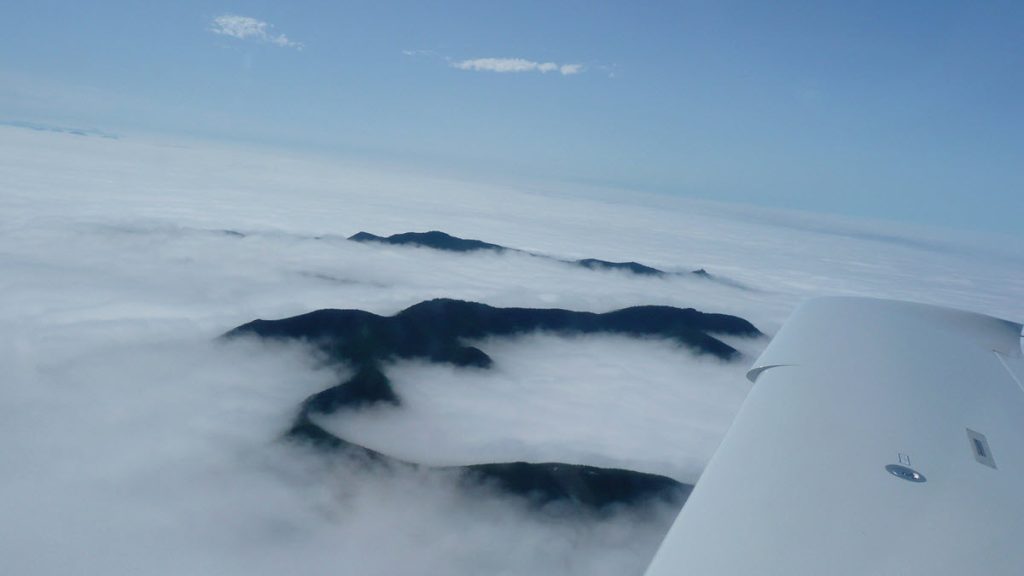
Room for Improvement
Having said that, Mark notes a few things he would change. Although he appreciates the functionality of the Garmin G2000, the location of the touch screen controller requires too much time in a ‘heads down’ setting. The touch screen controller also requires the pilot to maneuver multiple sub-menus even to make simple configuration changes.
There’s also room for improvement in the way the upper engine cowling connects to the airframe. The 48″ long steel rods used in the lower engine cowling make it very challenging to remove them. This may be a carryover from the Lancair kit airplanes, predecessors to the Columbia, the Corvallis and the TTx. Mark believes, if Cessna puts the TTx back into production, these improvements would make an already-excellent aircraft even better.
The one challenging maintenance issue Mark has faced is adding air to the tires due to the size of the hole. The wheel pants are well-designed in every other way, but that tiny hole poses some patience-testing problems.
More on Flying The Cessna TTx T240
Mark isn’t the only pilot in the family. Tim went on to complete his PPC at age 16. He and his dad both enjoy flying the family aircraft, which sees about 60 to 80 hours of airtime every year. They complete about 90% of their flights under IFR rules, even if they are flying in VMC conditions.
Fuel consumption ranges from 15-17 gph LOP (depending on power settings and altitude) to 19-20 gph ROP. Mark estimates the direct and indirect costs of keeping his airplane in the skies is $400 per hour.
When asked what his most memorable flight was, Mark had trouble deciding. With 12 years and 800 flight hours under his belt, he has had countless enjoyable moments; multiple trips to EAA AirVenture in Oshkosh and the air races in Reno, flights over the Grand Canyon, and many happy times spent with family in Northern Ontario.
But there was one spectacular flight that stood out. Mark shared, “You could call it a ‘core memory’ from an early morning departure from a little, uncontrolled airport on Vancouver Island from the town of Tofino. We were on our way to Seattle to the Air and Space Museum. A thin 100ft thick coastal marine fog layer covered the terminal area at about 200 ft AGL. We quickly punched through it and the sunlit view of the coastal mountains poking through the cloud layer along the Pacific coast was just a surreal view – certainly a view that very few people are ever lucky enough to see. Days like that remind me how blessed I am to be able to fly.”

SPECIFICATIONS & PERFORMANCE: Cessna TTx T240
The rest of this article can be seen only by paid members who are logged in.Have a website login already? Log in and start reading now.
Never created a website login before? Find your Customer Number (it’s on your mailing label) and register here.
JOIN HERE
Still have questions? Contact us here.

